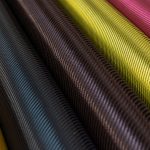Bedford, MA, June 24, 2020 — “Why me?” is a common gripe heard throughout the summer when legions of mosquitoes attack one person while leaving others unscathed. What is it about these ill-fated chosen few that make them a mosquito magnet?
“A mosquito’s ability to find human hosts is annoyingly accurate,” said Kyle Adelman, senior marketing manager at Thermacell® Repellents, Inc., a leading manufacturer of area mosquito repellents. “With more people spending their time outdoors this summer, the chances of being on the mosquito buffet will only increase.”
A recent survey by Thermacell revealed that 48 percent of Americans indicated they are now spending more time outdoors, and 77 percent said they’ve had mosquitoes interrupt their activities.
The Thermacell® May 2020 Outdoor Behavior Survey polled 500 consumers in the U.S. to learn more about outdoor behaviors and activities in light of the current COVID-19 pandemic.
According to Adelman, the secret to avoiding mosquitoes is to understand what makes certain people a mosquito magnet. Then, develop strategies to make yourself less attractive to nature’s itchy annoyance.
Your Excretory Cocktail
Armed with a triple threat of sensors that rely on vision, smell, and thermal cues, mosquitoes can find their next meal with uncanny precision.
To start the hunt for blood to feed her young, the female mosquito flies at approximately 1.5 miles per hour, searching for carbon dioxide. She is armed with nerve cells with specialized receptors that can detect the carbon dioxide from our exhalations as far as 160 feet away.
Using the carbon dioxide plume to guide her toward the host, the mosquito’s vision starts providing cues as she gets within 30 feet.
Within eight inches of your body, she will sense your body’s heat and moisture, along with other chemicals that include ammonia, butanol, and lactic acid. A mosquito can detect more than 100 individual human odors.
Bathing in your human perfume, the mosquito zeroes in on your body heat as she pinpoints her landing spot to start the feast.
What Makes Some More Attractive Than Others
Research has shown that mosquitoes tend to be attracted to the following:
- People with higher body temperatures. Body temperature is influenced by activity, age, gender, and even eating spicy food.
- People who are active during exercise, including yard work and gardening, because they produce more carbon dioxide, sweat containing lactic acid, and higher body temperatures.
- People with higher concentrations of steroids or cholesterol on their skin’s surface.
- People with higher levels of stress. Mosquitoes appear to be able to detect and are attracted to hormones released during times of stress.
- People with higher levels of a specific bacteria. People tend to have higher levels of bacteria near their ankles and feet, which may account for mosquitoes targeting those areas.
- Pregnant women because they have slightly higher body temperatures and produce more CO2.
- People wearing dark clothing. Reds, blacks, and blues attract more mosquitoes than lighter colors like white and yellow.
- Alcohol drinkers because alcohol makes your blood vessels dilate, which increases your skin temperature. Mosquitoes are also attracted to the ethanol content in sweat.
How to Be Less Mosquito-Friendly
Short of staying inside all summer, there are some practical tips you can implement to reduce your chances of being bit:
- Shower after exercise to reduce your sweat and thermal signatures.
- Cover exposed skin by wearing long-sleeved shirts and long pants.
- Wear light-colored clothing.
- Use oscillating fans on decks and patios to increase air movement and decrease your CO2 signature.
- Use an EPA-registered mosquito repellent.
You can also reduce your chances of encountering mosquitoes by reducing their population. Search your property for areas of standing water in pots, toys, ditches, or holes. A mosquito only needs a tablespoon of water to lay 50-200 eggs.
If you’re stationary in your yard, use Thermacell technology to create a 15-foot zone of protection from mosquitoes. Simultaneously using multiple units increases the protection zone beyond 15 feet. Thermacell area repellents use heat to disperse a powerful repellent, a synthetic copy of a natural repellent found in chrysanthemum plants, into the air. This zone repellent technology provides an invisible and scent-free barrier to mosquitoes.
When you’re on the go, you can prevent mosquito bites by using an EPA-approved topical repellent on your skin and clothes. If the repellent contains DEET as an active ingredient, be aware that it can damage plastics, including synthetic or treated fabrics like rayon and spandex. DEET will not damage natural fibers such as wool or cotton.
Clothes can also be treated with Permethrin, a pesticide that is sprayed on clothing to kill ticks and mosquitoes when they encounter the treated fabric.







